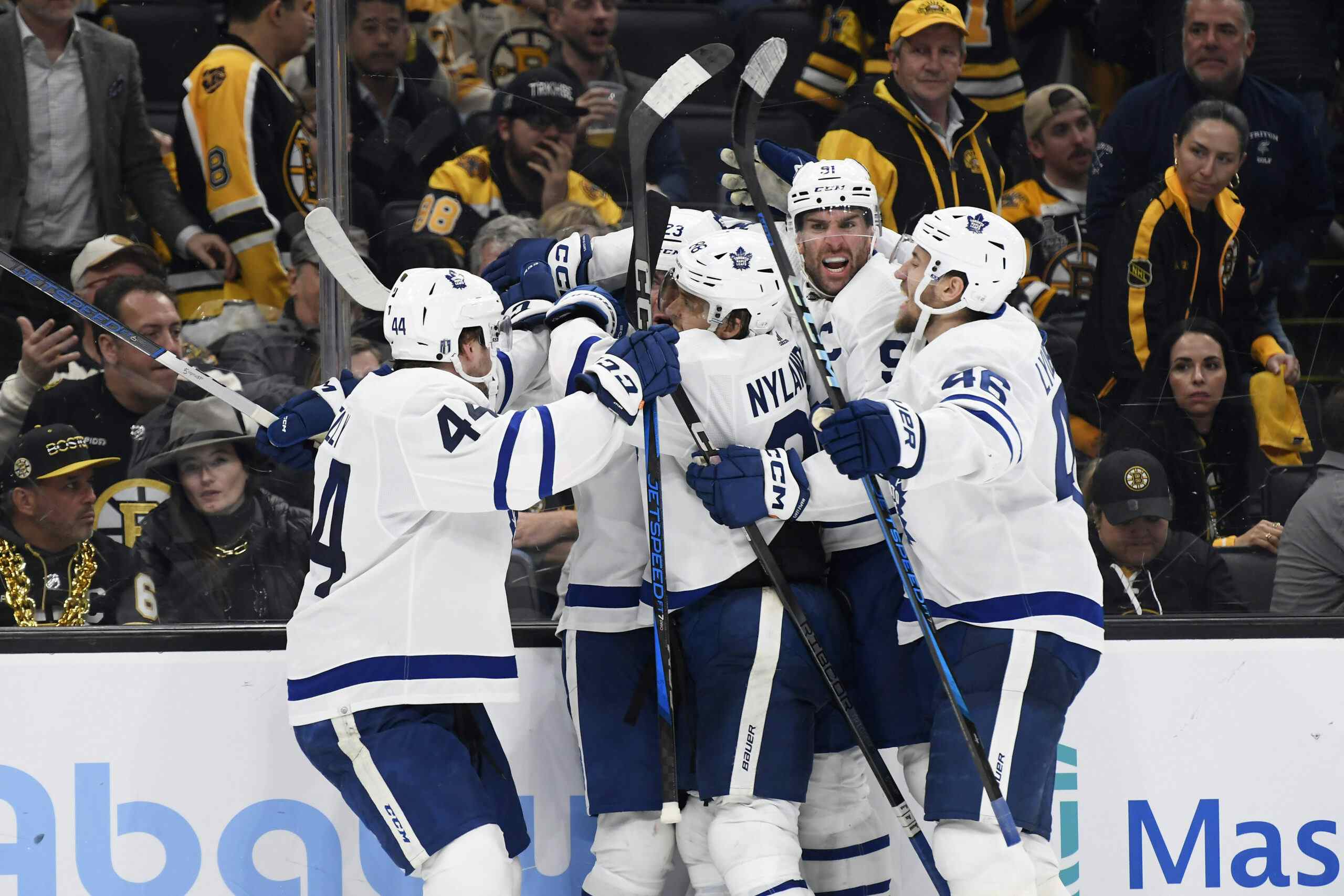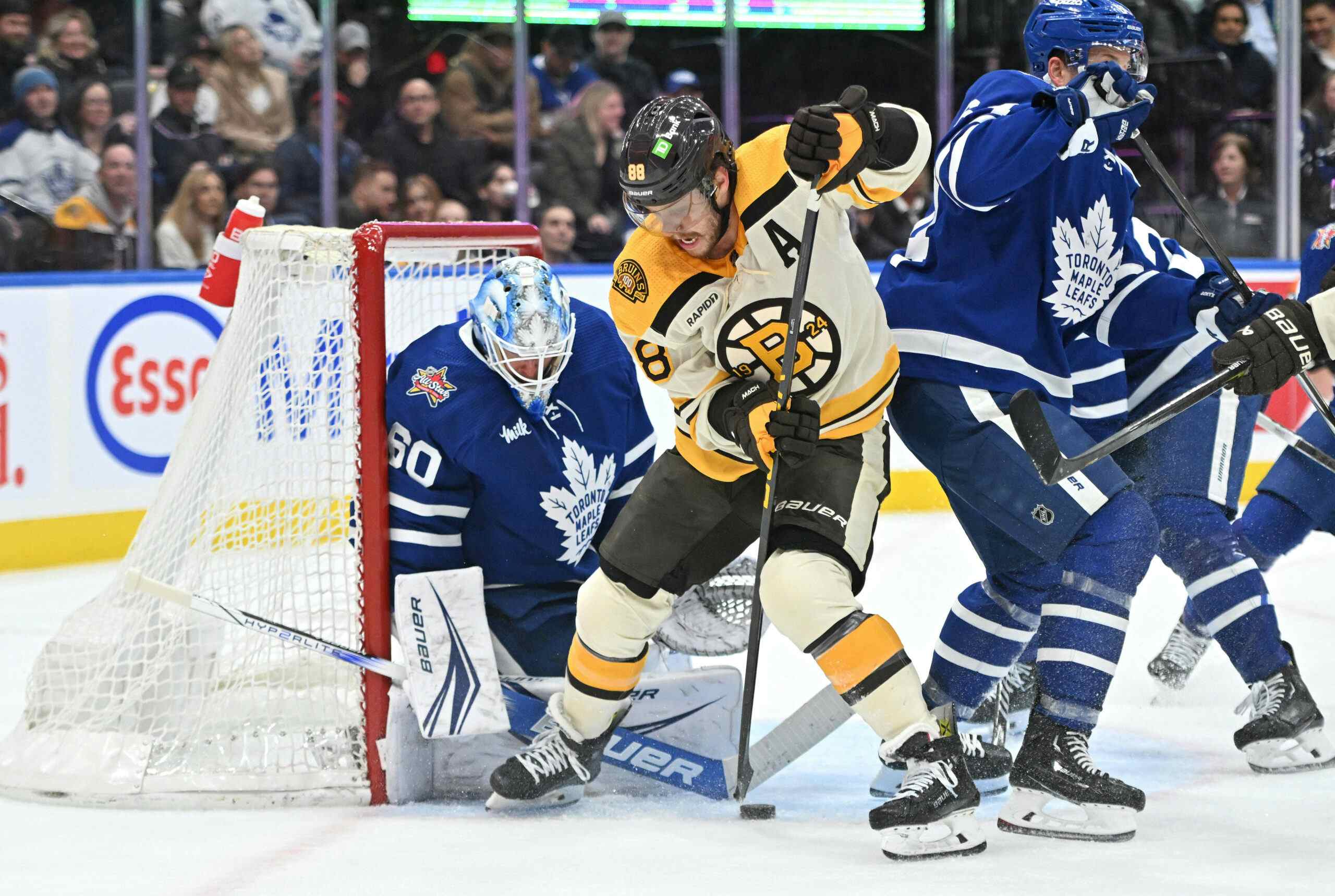Forecasting Phil: What should the Leafs look to pay Phil Kessel?
By Cam Charron
10 years ago
The Toronto Maple Leafs have a black cloud looming overhead. Phil Kessel is an unrestricted free agent next summer, meaning that he will, in July of 2014, be eligible to negotiate his services with any clubs in the NHL or elsewhere.
Good players are expensive, and good players are expensive for a reason. Getting one or two players under value contracts is a lot about what we do in the statistical corner of the blogosphere, but ultimately, the story of the game will be drawn to its superstars. When a team underperforms, there’s a tendency to blame the veteran leadership group rather than the supporting core that simply wasn’t built up from enough good players. Kessel and Dion Phaneuf are definitely aware of this quirk. Place Rick Nash on a team that people watched for the early part of his career in Columbus, and he’d have taken much more heat for failing to lead his team to regular playoff appearances or more victories.
What is a superstar worth on the open market, however? One of the biggest issues the NHL ran into before the salary cap era was that unrestricted free agency began at age 31. It’s been knocked down to seven years of NHL experience, so players can hit UFA status at age 25, though most do at age 27. Free agents in any sport tend to make money for the work they’ve already done as opposed to the work they will do over the course of the contract.
This can be an issue in hockey. Not every team can sell tickets without big name players, so smaller market teams have to drive up the price of players. Corey Perry and Ryan Getzlaf signed contracts with the Anaheim Ducks this season worth $69-million and $66-million over eight seasons. That’s the maximum term, and since NHL teams are no longer allowed to spread the bulk of the deal over more years, superstars are going to have much higher salary cap hits than they did in the early days of the salary cap. $69-million over eight years is a hit of $8.625-million. $69-million over 11 years is $6.27-million. That extra two-and-change million for eight years adds up to a good supporting player or two. Getzlaf and Perry though, as players known and recognized by casual Anaheim fans and media, are more important in that spot to help the team sell tickets.
It’s not an efficient system, but ultimately fans know the best players by heart and it takes a special breed of geek to be able to name the top third liners on Southeast Division teams. The star players are the most expensive ones and the most scrutinized. There was a lot of people who gave the Pittsburgh Penguins with the additions of Jarome Iginla and Brenden Morrow the best shot at the Stanley Cup, because four years ago, Iginla and Morrow were elite goal scorers. There were a lot of Penguins fans who were uneasy with the prospect of Tomas Vokoun getting starts over Marc-André Fleury in the postseason, when that turned out to be the best decision as well. Fleury, Iginla and Morrow are big names, but they aren’t as productive as people think, and ultimately the Penguins were bounced as Vokoun’s excellent goaltending wasn’t enough to cover a huge goal-scoring deficit for the star-riddled Penguins lineup.
So what does Kessel deserve to make? Obviously, he’ll get a big contract. Would it be worth it? There was an interesting post over at Vintage Leaf Memories Monday morning that’s well worth your time:
But in a business sense, fans are captive, though we help generate the reality of astronomical contracts. Because so many people bet on sports, follow sports, have a rooting interest in particular teams, we all, each in our own way (for example, simply watching games on TV, which boosts rating and therefore advertising revenues; buying merchandise; going to games, etc.) contribute to the inflationary spiral.Regardless, absurd, long-term contracts, right or not, are the going rate in professional sports nowadays. If you want to keep a player like Kessel who is in the top-tier of NHL talent, you evidently need to spend ridiculous money—whether, like the Canucks in the Luongo situation, you end up regretting it mightily down the road.
I agree with most of that. Kessel, while coming off four seasons with the Leafs at 0.42 goals per game—or 35 over 82 games—is not only exciting to watch but also the team’s best skater. He’s been an elite goal scorer without the benefit of a first line centre, and after a slow start to the season, Kessel finished strong, recording 20 goals over the 48 game season and getting four goals in the seven-game series against the Boston Bruins including a goal in both Games 6 and 7.
If James Reimer was the team’s most valuable player in the regular season (we still have an awards show for The Leafs Nation to run through) then Kessel was its most valuable in the playoffs, a stretch of time where there was doubt he would have been able to perform. Of course, the postseason is still just hockey, and if Kessel will tell you anything, all it will be is that he’s just a “hackey player” who loves to play. It should have been no surprise that a dominant regular season goal scorer could also be one in the post-season.
However, Kessel’s big run has been from age 22 through 25 in Toronto. 26 through 29 will be a different story. Part of the reason why the “superstar” teams like the New York Rangers pre-cap or Pittsburgh Penguins this season seemed to underwhelm is that generally, scoring primes come much earlier in careers than people think. Gabe Desjardins estimated that peak “points per game” production from a player is between 23 and 27, not 28 through 30.
How does this affect elite goal scorers? I looked at players 29-or-over that had similar goals per game numbers as Phil Kessel between 22 and 25 over since 2001. The list of players was unfortunately quite short:
- Patrick Elias
- Milan Hejduk
- Marian Hossa
- Jarome Iginla
- Jeff O’Neill
- Jason Spezza
- Petr Sykora
- Thomas Vanek
Here are those players’ goals per 82 games over the course of ages 22-through-29:

There’s a pattern, but what’s it telling us? Let’s break it down by 2-year segments:

And three years?

It’s dipping. Four year segments, I’ll keep to within 32 and 38 goals per game so it’s easier to see what’s going on:

The argument here is that the Leafs have one or two real good years left out of Kessel before they can continue putting “30+” next to his name in pen in pre-season predictions. I wouldn’t fault them for using a pencil, but it’s quite clear that the comparable scorers for Kessel dipped after about age 27. Ages 25-28 and 26-29 go down, like Gabe’s chart shows. Keep in mind Kessel’s first “UFA” year would be age 27.
I have no idea what the market will be set at since the dynamics of player salary will change so much from the last collective bargaining agreement to this one, but I do agree with Michael Langlois at VLM that a long-term contract at a high price could be a nightmare. If you structure the deal like Perry’s, cutting the deal off at five or six years should leave an AAV of $9-million, which seems like a fair price. I’d go one year less than that, however.
As has been pointed out to me after both me and Jeff roasted Dave Feschuk for suggesting that the Leafs trade Kessel, though, the Leafs should be open to at least the possibility if they can’t get anything done by deadline time. Will the Leafs next season be the slow, tough team that got out-shot virtually every night and banked on their goaltender to give them wins, or will they be more like the speedy, talented Leafs that took the Eastern Champion Boston Bruins to seven games in the first round of the playoffs and outplayed them decisively in at least three of those contests?
Though I would start discussions right on July 5. If you can get something done in the summer, it takes away a huge headache during the 2013-2014 season.
Recent articles from Cam Charron





